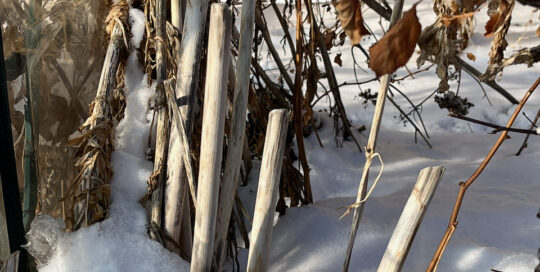Plant Nutrition: How to Give Your Plants What They Need to Thrive
Views: 5182

After gardening for decades it’s good to know there’s always something to learn. A couple of weeks ago I received a significant lesson on macro and micronutrients from a soil scientist. I went into the story thinking I was going to enlighten readers on the nuances of adding micronutrients to the soil to almost magically improve the soil and plant health, and subsequently the nutritional aspects of the fruits or vegetables. Well, I got educated on how the whole thing works, so I thought I would share a few points.
Macronutrients and Micronutrients
One of the most insightful comments was Liebig’s law of minimum, which states that the plant growth is proportional to the most limiting nutrient. For example, if the plant doesn’t have enough nitrogen, adding boron isn’t going to make a lick of difference. So when you’re dealing with plant health, it’s kind of like building a house. You have to have a good foundation of the necessary macronutrients, such as carbon, water, oxygen, nitrogen, phosphorous, and potassium before the others that are needed in smaller quantities come into play.
As far as the micronutrients go, they’re not as difficult to add as you might think. Osmocote Plus has magnesium, boron, copper, zinc, iron (including chelated iron), sulfur, manganese, and even molybdenum. These are the ones that might be missing under specific conditions. This is particularly in a case where there is irrigation and the nutrients can be leached through the soil. There are also natural amendments with various mined minerals. The primary question is whether the elements are available to the plants. Just because they’re present doesn’t mean the plants can use them.
Alkaline and Acidic Soils
But what really shook my world was the discussion on alkaline and acidic soils. Acidic soils are fairly easily remedied with lime (although it’s not a one-time deal). Dolomite lime is a source of calcium and magnesium, just in case those are lacking in the nutrient profile. The alkaline soil isn’t as straight-forward. It’s basically buffered with calcium carbonate that makes it difficult to correct, even in the short term.
One of the things I’ve been told is that if you have the nutrients right in the soil, the pH will correct itself. That’s not true. To a certain extent, you’re dealt a hand with the type of soil and environmental conditions you are given. You have to understand your soil structure in order to know what needs to be done to work with it.
Adding Compost to Soil
Of course, one of the best things you can do in any situation is to add more organic matter to the soil. However, even in adding manure based compost, you could be tilting the phosphorous level off kilter. Plants can only use a certain amount. It isn’t a nutrient that leaches from the soil like some of the others. It can accumulate causing problems with plant health, as well as pollution to nearby water sources. I know of a botanical garden that had to remove the top 2 ft. of soil in one of their large gardens and replace it with soil not laden with phosphorus. It’s easier not to add too much, and thankfully using one of the simple test kits from the garden section does a decent job of letting you know how it looks.
Volumes have been written on soil nutrition and delving into it can feel like reading a chapter from your college chemistry class. But the easiest first step is to understand the macro and micronutrients your plants need, and do your best to provide them.
Meet Amy Grisak
Amy is a freelance author and photographer in Great Falls, MT who specializes in gardening, foods, and sustainable agriculture. She provides information on every kind…
Amy's Recent Posts

This Little Piggy is a Problem: Dealing with Feral Hogs








